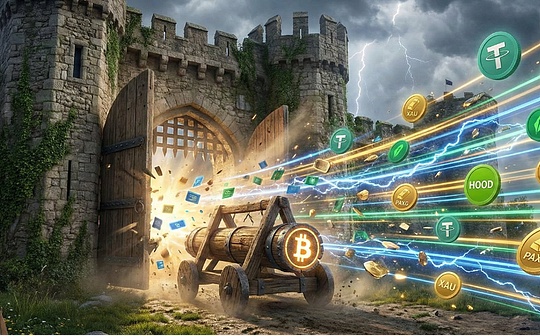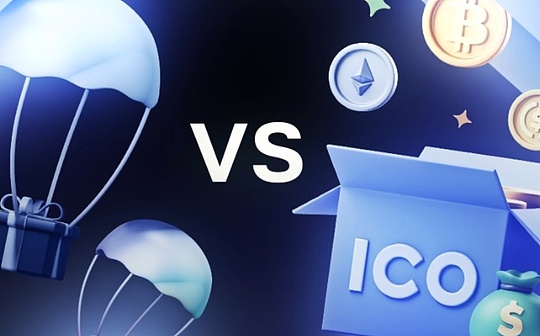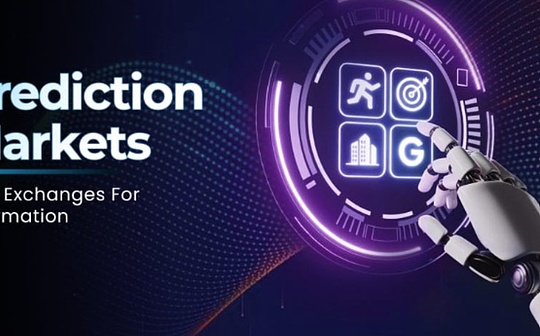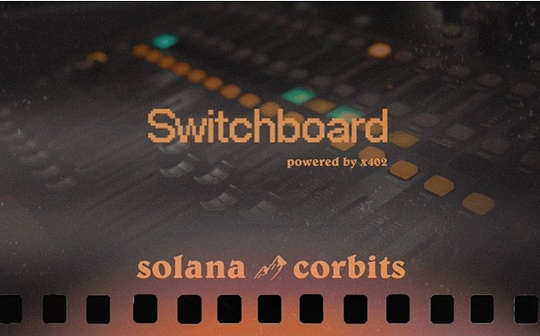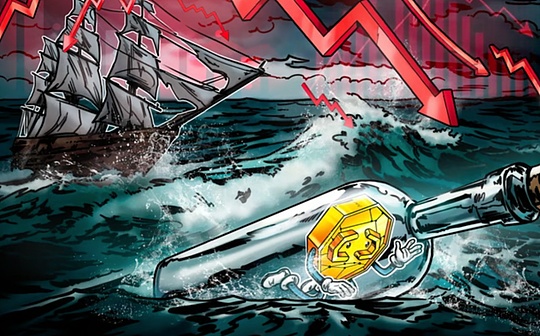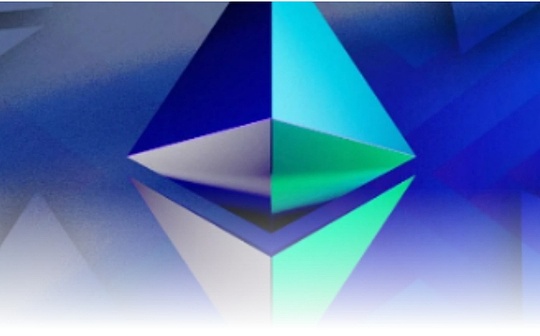
Author: Severin, Ian Wu, MT Capital
TL;DR
·One of the core of the Dencun upgrade is to introduce a new data structure blob through EIP-4844 to store transaction data submitted by L2 to Ethereum.This significantly reduces the transaction cost of Ethereum L2 and increases the transaction throughput of L2, which is beneficial to the L2 ecosystem.
·Dencun upgrade also introduced a new instantaneous storage opcode through EIP-1153, which supports smart contracts to read and call temporary stored data.In this way, it reduces Ethereum’s storage cost and Gas consumption, improves the scalability of the main network, and benefits the main network ecological application.
·According to the Shadowfork test report released on December 19 and the 178th Ethereum core developer execution meeting held on January 4, the current Ethereum Dencun upgrade test is in good condition, and the main network’s Dencun upgrade is expected to be completed by the end of February.
·Dencun upgrades will promote the prosperity of the L2 ecosystem and drive the demand for Infra tracks such as decentralized storage, DA and RaaS.For the application layer, tracks such as Perps, LSD, ReStaking and FOCG will also benefit from the Dencun upgrade.
Cancun upgrade
Cancun upgrade background
On December 28, 2023, Vitalik released an article on Make Ethereum Cypherpunk Again, talking about what he believes is his vision of crypto.Among them, Vitalik emphasized that one of the core reasons why blockchain is limited to asset speculation is the increase in transaction fees.The high online transaction fees have caused people to shift from users of blockchain networks to speculators of blockchain networks.In order to realize the application value of blockchain, the transaction fees of blockchain network must be reduced by another order of magnitude.Even though the emergence of L2 has reduced network costs compared to Ethereum’s main network, this is far from enough.
Similarly, the rise of Solana’s ecological network at the end of 2023 is also closely related to its extremely low online transaction fees.Compared with the Gas cost of Ethereum L2 at a cost of $0.5, Solana’s Gas fee as low as 0.0005 is almost negligible.Extremely low network Gas promotes the thriving Meme hype, DeFi application interaction and DePIN application migration on Solana.In particular, cNFT on Solana can reduce minting costs by 1,000 times compared to NFT on Ethereum, which also brings prosperity to some DePIN-type projects and creator-based economic projects with NFT as the core of the economy.It can be seen that low online transaction fees play a significant role in promoting the prosperity of online transaction activities and ecological applications.

Ethereum L2 still has high Gas fees
source: <https://l2fees.info/>
Of course, Ethereum has long been aware of this problem.In Ethereum’s upgrade roadmap, the next upgrade after the merger is aimed at increasing Ethereum’s TPS and reducing transaction fees for the Ethereum ecosystem.Ethereum’s upcoming Dencun upgrade is part of “The Surge”, aiming to further improve Ethereum’s transaction throughput and scalability through the introduction of Proto-Danksharding.
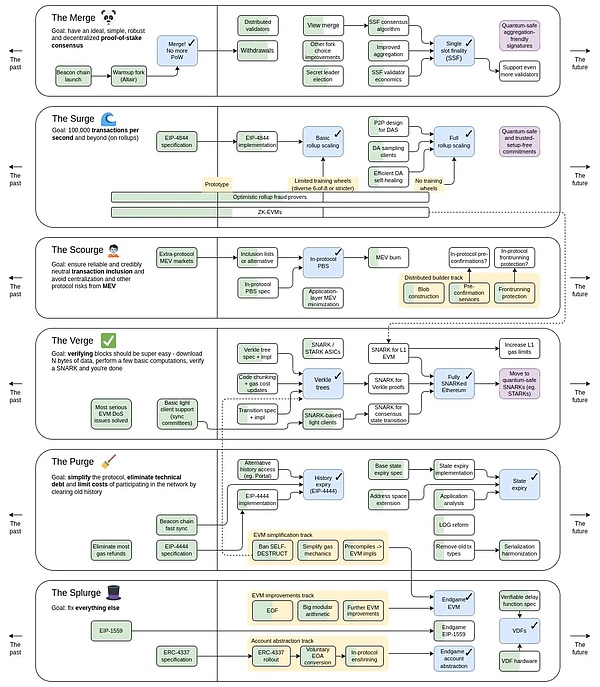
source: https://twitter.com/milesdeutscher/status/1550315295402668032
One of the core of the Dencun upgrade is the introduction of the Proto-Danksharding module.Proto-Danksharding is also preparing for Ethereum’s final shard expansion.The earliest Ethereum expansion plan was to split Ethereum into different shards, allocate the main network’s computing load into each shard, and each independent shard saves a subset of transaction data that occurs on Ethereum.Process transactions in parallel, thereby improving Ethereum’s TPS.The initial ETH2.0 plan ultimately divided the mainnet into 64 shards to achieve 100,000+ TPS.
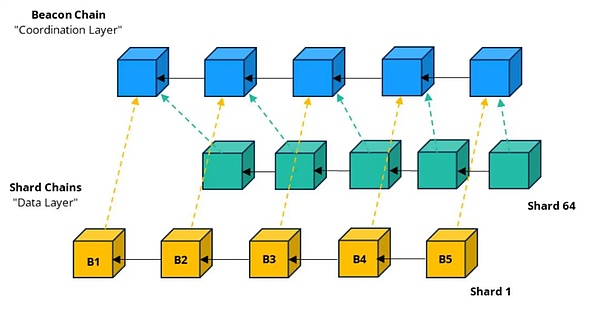
source: Crypto.com Research
However, the development complexity of shard expansion itself is high and the development progress is slow.In contrast, the Rollup expansion solution that takes over Ethereum’s transaction execution to the second-tier chain and relies on Ethereum for settlement, consensus and data availability has developed rapidly at an extremely fast speed and implementedWith lower transaction costs and higher throughput, some Ethereum expansion needs have been met to a certain extent.This has led Ethereum to gradually abandon the scaling path with sharding as the core and instead adopt data sharding for Rollup.
Compared with the traditional method of sharding chain scaling expansion, Danksharding’s scaling implementation path is relatively simple.One of the core contents of the Dencun upgrade that is about to be carried out is the introduction of Proto-Danksharding, which is the first to introduce blobs into the block space, optimize data availability costs through blobs and improve the scalability of L2.Proto-Danksharding introduced by Dencun will also become the first step in the comprehensive expansion of Ethereum, laying the foundation for further realizing complete Danksharing, introducing separation of block proposers and builders, and realizing data availability sampling.
Cancun upgraded kernel
Proto-Danksharding
Proto-Danksharding, also known as EIP-4844, is the most critical module in the Dencun upgrade.Proto-Danksharding’s name comes from two researchers who proposed the expansion idea: Proto Lambda and Dankrad Feist.Take part of their respective names as the naming of the upgraded content.Proto-Danksharding reduces L2 cost by introducing a new data storage structure blob to optimize L2 performance.
Types of transactions carrying blobs:
Previously, all transactions in Ethereum L2 were stored in the Calldata of L1.The space size of Calldata itself is relatively limited, and all data on Calldata will be processed by Ethereum nodes and permanently stored on the chain, which leads to high data availability costs.Theoretically, L2’s transaction data does not need to be permanently stored on expensive Ethereum L1, but only needs to be stored for a certain amount of time to meet verification requirements such as fraud proof.In other words, Ethereum L2 transaction data lacked the right storage space in the past.From the data point of view, 80% of the transaction costs of L2 and Gas fees come from the expensive data storage costs in Calldata.
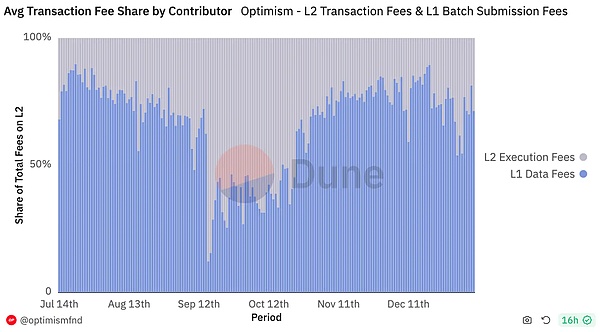
source: https://dune.com/optimismfnd/optimism-l1-batch-submission-fees-security-costs
Proto-Danksharing will introduce a new data storage structure in the Ethereum block: blob.The blob will be used specifically to store transaction data submitted by L2 to L1.
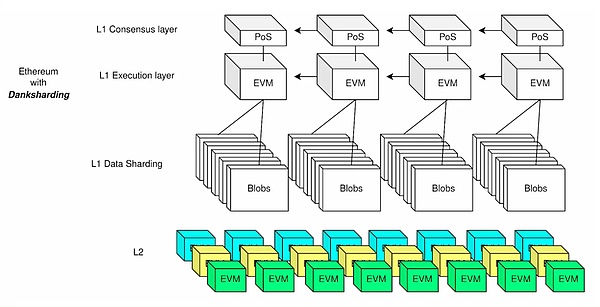
source: https://hackmd.io/@luozhu/SyleCcpti
Each blob introduced by Proto-Danksharing is 128 KB in size, and each Ethereum block plan contains 3-6 blobs (0.375 MB – 0.75MB), which will gradually expand to 64 in the future.

source: https://a16zcrypto.com/posts/article/an-overview-of-danksharding-and-a-proposal-for-improvement-of-das/
In contrast, the data size that Ethereum can accommodate is less than 200KB per block. After the introduction of the blob, the amount of data that Ethereum block can accommodate will be significantly increased.
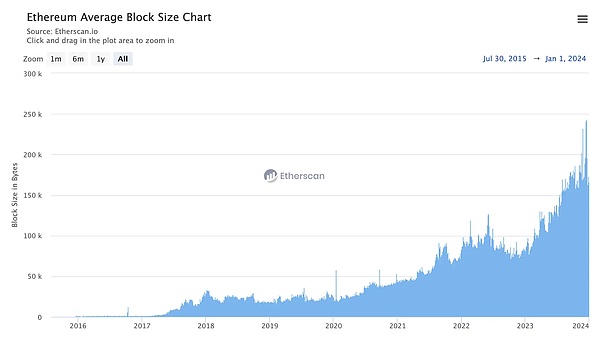
source: https://etherscan.io/chart/blocksize
After the blob is introduced, the transaction data submitted by L2 will no longer need to compete for Calldata’s storage space, but will be directly submitted to the blob for storage.Moreover, the blob data will be automatically deleted after about one month, further reducing unnecessary storage burden.The introduction of blobs means that the transaction fees of L2 will be greatly reduced (~90% lower), and since blobs are equivalent to expanding the block space for L2, the transaction throughput that L2 can submit simultaneously will also be significantly improved.If Dencun successfully achieves the average goal of plug-in for 3 blobs in a block after upgrading, L2’s throughput will increase by nearly 2 times.If the goal of plugging 64 blobs in a block is finally achieved, the throughput of L2 will increase by nearly 40 times.
In addition, blob also has an independent expense market.Proto-Danksharing also introduced a new type of Gas called blob Gas.The Blob Gas fee mechanism in EIP-4844 is rooted in the previously introduced EIP-1559 mechanism, where the storage space of the blob will be auctioned based on its own fee market.This means that the blob’s cost market is completely unique to the needs of block space, thereby improving the flexibility and efficiency of network resource allocation.Data storage costs in blobs are about 1 data per byte Gas(one data-gas per bype), while Calldata is priced at 16 data per byte Gas(16 data-gas per byte).In contrast, Blob’s data storage cost is significantly lower than Calldata’s data storage cost.

source: https://foresightnews.pro/article/detail/38853
After the introduction of the blob, the operation process of the L1 and L2 block networks will also change.First, L2 needs to publish its commitment to transaction data on the chain.Then, L2 needs to submit the actual transaction data to the blob.At the same time, the node can check whether the promise is valid and verify the data.Consensus layer nodes prove that they have seen the data and that the data has spread on the network.After about a month, the node will delete the data in the blob, and this part of the data can be stored in other DAs.

source: OP in Paris: OP Lab’s Protolambda walks us through EIP-4844
KZG Commitment
EIP-4844 also introduced the KZG (Kate-Zaverucha-Goldberg) commitment scheme as part of the blob verification and proof generation process.KZG Commitment is a polynomial commitment scheme that enables the committer to commit a polynomial using a short string, which supports validators to use short strings to confirm the declared commitment.Simply put, KZG can simplify the verification of large amounts of data into verification of small encryption promises.
Data blocks can be represented as polynomials and then used with a polynomial commit scheme to submit data.The polynomial commitment scheme generates commitments to the data, so that specific properties of the data blob can be effectively verified without the need to read its contents in full.The implementation of KZG promises also paves the way for implementing data availability sampling (DAS) in Danksharding.With DAS, validators can verify the accuracy and availability of data blobs without downloading the entire blob, thus improving efficiency and scalability.
Other EIP upgrades:
In addition to EIP-4844, the Dencun upgrade also includes the following four key EIP improvement proposals.
1.EIP-1153:EIP-1153 introduces a new storage state: instantaneous storage.Previously, all storage on Ethereum was permanently stored. The permanently stored data not only occupied block space, but also required Gas fees.However, for certain unnecessary data, such as data that is valid only during a transaction, permanent storage is unnecessary and resource-consuming.Therefore, EIP-1153 introduces instantaneous storage opcodes, which support smart contracts to read and call temporary stored data.Once the complete execution cycle ends, the storage of this part of the data will be cleared.This will reduce Ethereum’s low storage costs and Gas consumption.

2.EIP-4788: EIP-4788 will introduce the beacon block root into each EVM block.Previously, EVM and beacon chains, two core parts of Ethereum, operated independently and could not communicate directly. That is, EVM cannot directly access the data and status of the beacon chain, and can only capture the beacon chain through external trusted oracles.state.EIP-4788 is essentially similar to the introduction of protocol-level oracles, relaying Ethereum’s consensus state to the Ethereum main network.EIP-4788 will introduce a new field “parent_beacon_block_root” into the execution block header, and EVM can directly export the state of the Ethereum consensus layer from it to obtain consensus layer data.The parent beacon root will be stored in the ring buffer and will only be retained by the main network for about 1 day.Once the new parent beacon root is added to the buffer and the buffer capacity reaches the critical value, the oldest parent beacon root will be overwritten, enabling efficient and limited consensus storage.The introduction of EIP-4788 allows the Ethereum main network to obtain data from the Ethereum consensus layer in a way that minimizes trust., eliminates dependence on external oracles, thereby reducing potential security risks, oracle failures and malicious manipulation risks.
3.EIP-5656: EIP-5656 introduces a new EVM opcode called MCOPY, which aims to optimize the process of replicating data in memory during smart contract execution.Previously, if developers needed to copy memory data, they needed to reference the two opcodes MSTORE and MLOAD. MCOPY is essentially a combination of these two opcodes, filling the operation gap in the memory copy field in previous EVMs.The MCOPY opcode can significantly reduce the cost of copying 256 bytes of memory data from previous 96 Gas to 27 Gas.The introduction of MCOPY will make the operation process of copying memory data faster, less costly and more efficient, and developers can further optimize smart contracts involving memory operations based on this.
4.EIP-6780: EIP-6780 will limit the SELFDESTRUCT opcode function.By limiting self-destruction, Ethereum can better manage its state size, resulting in a more stable and predictable blockchain.This is crucial for long-term scalability and maintenance of the network, as it will simplify future Ethereum upgrades.
Cancun upgrade status
12.19 Shadowfork Test Report
According to the test report of Shadowfork launched on the 19th, the current upgrade test in Ethereum Cancun is in good condition, and the Ethereum Foundation will continue to fork Shadowfork for intensive testing in the next two weeks.The Goerli, Sepolia, and Holsky nodes will also be tested at three time points: 1.7, 1.30 and 2.7.If the testnet is running well,The Cancun upgrade of the mainnet is expected to be completed within February.
Judging from the Shadowfork test report, the resource usage of nodes, overall network usage, network health status, blob distribution and dissemination of nodes during the test period are all as expected.
Judging from the CPU and RAM usage, before and after the Cancun test fork, the resource utilization rate did not fluctuate significantly, and the overall remained stable.
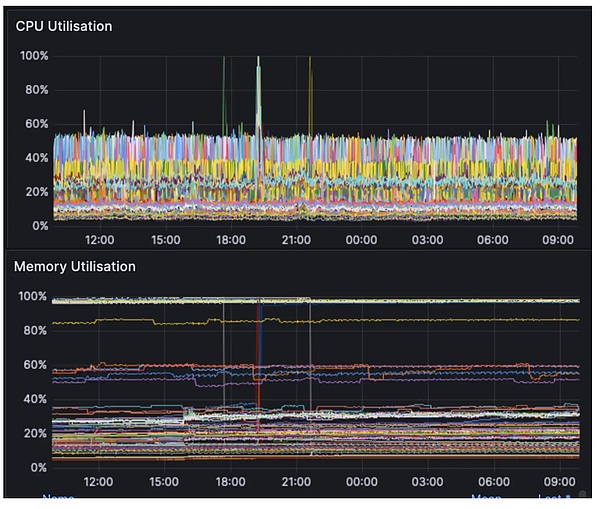
source: https://notes.ethereum.org/@ethpandaops/dencun-gsf-1-analysis
Judging from the network usage, compared with the Shadowfork baseline, the network usage increased significantly as expected after the Cancun test.With good blob usage, network usage is expected to increase by about 200kbps.
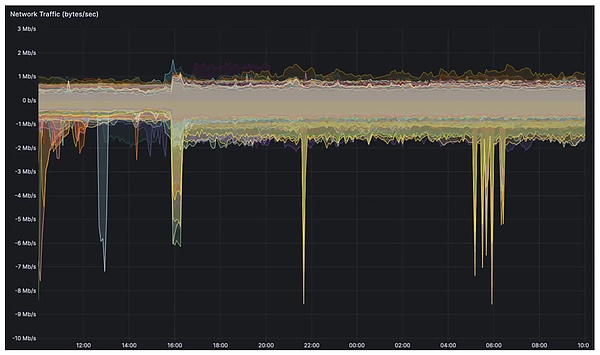
source: https://notes.ethereum.org/@ethpandaops/dencun-gsf-1-analysis
During the test period, the overall network remained stable, no client downtime, and the client was running smoothly.
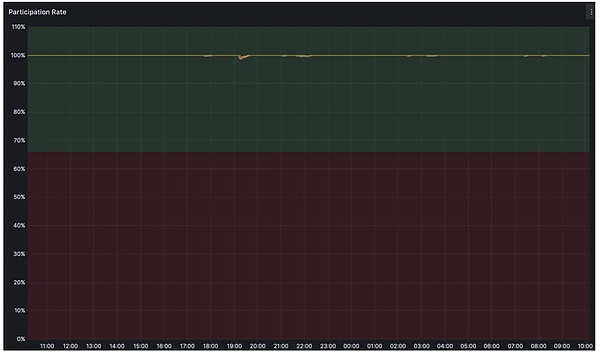
source: https://notes.ethereum.org/@ethpandaops/dencun-gsf-1-analysis
During the test period, most blocks contain 3 blobs, consistent with the target blobs.

source: https://notes.ethereum.org/@ethpandaops/dencun-gsf-1-analysis
The blobs propagate to 95% of nodes in less than 2s, and on average, most blobs can propagate through the full network in 500 milliseconds.Ideally, the propagation time of the block is expected to increase by about 250 milliseconds.
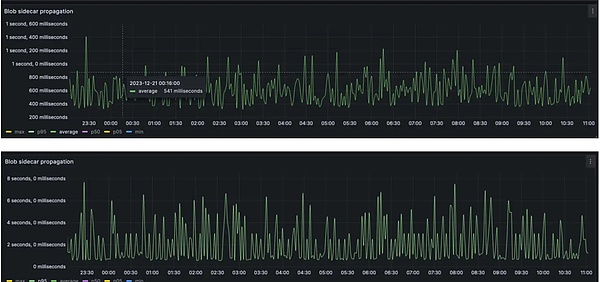
source: https://notes.ethereum.org/@ethpandaops/dencun-gsf-1-analysis
1.4 Telephone
On the evening of January 4, the 178th Ethereum core developer executive meeting was held online.The meeting finalized the testnet Dencun upgrade schedule.The developers unanimously agreed to conduct Goerli, Sepolia and Holesky test network upgrade tests on January 17, January 30 and February 7 respectively.
At the same time, in order to quickly respond to and solve possible problems during the test network upgrade process, the developer decided to hold the 179th meeting on January 17 the day after the Goerli test network was completed to discuss the test content, depending on the situationDecide whether you need to update the test network upgrade test schedule.
Although developers have not reached a final consensus on the upgrade time of the main network, judging from the current Shadowfork test data, test schedule and time process, the Dencun upgrade of the Ethereum main network will likely be carried out at the end of February.
Potential opportunities and favorable tracks
L2
One of the most direct positive tracks for the Dencun upgrade is the L2 track. The introduction of blobs has significantly reduced the transaction fees of L2 and increased throughput to a certain extent.Dencun’s stimulation for L2 is that it can further compete with other Alt L1s, attracting high-quality projects and users of other L1 ecosystems with lower expenses and better performance.
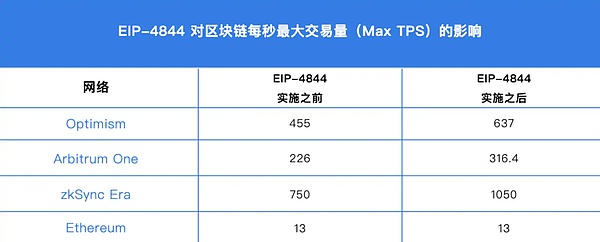
source: https://www.techflowpost.com/article/detail_14912.html
Dencun upgrade is a good thing for all Ethereum-based L2, but under the universal benefits, we will focus on which L2 projects have more unique competitive advantages and can gain more dividends from Dencun upgrades..
L2 Ecology
Arbitrum
The current leading Ethereum L2 are still Arbitrum and Optimism, but their competitive advantages and competitive directions are slightly different.Arbitrum is ahead of the diversity of Arbitrum One-based protocols, and Optimism is ahead of the inter-chain ecological diversity based on OP Stack.
Arbitrum is still the most abundant L2 in all protocols.According to incomplete statistics from DeFiLlama, the number of protocols on Arbitrum is about 520, far exceeding the 216 of Optimism, which ranks second.According to L2beat data, Arbitrum’s TVL is currently about 11.26B, accounting for nearly half of Ethereum Rollup’s TVL.
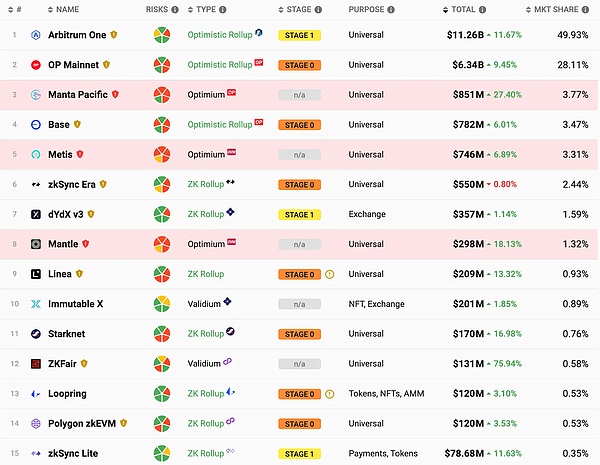
source: https://l2beat.com/scaling/summary
In addition, online trading activities on Arbitrum are also very prosperous.Judging from the online transaction volume ranking in the past 30 days, Arbitrum has a transaction volume of about 36M, second only to zkSync, which has not yet issued coins and still has a lot of hair-fighting activities.If L2 with airdrop interaction is eliminated, only compare Arbitrum that has issued coins with Optimism, Arbitrum is also far ahead with three times Optimism’s online transaction volume.
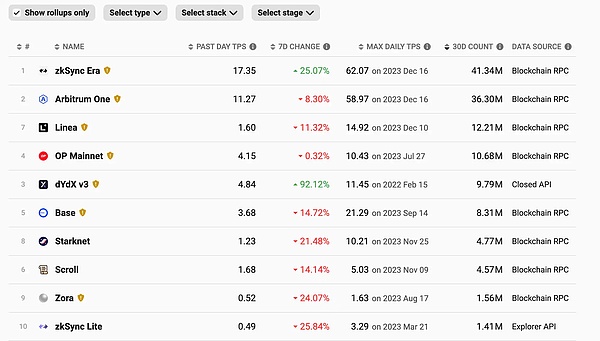
source: https://l2beat.com/scaling/summary
Overall, Arbitrum, which has the highest online transaction volume, can obviously enjoy more dividends brought by the reduction in transaction fees, and the optimization of TPS is also conducive to the prosperity of protocol ecosystems such as GMX and GNS on Arbitrum that require higher performance requirements.From the perspective of network fundamentals, Arbitrum is undoubtedly one of the biggest beneficiaries of the Dencun upgrade.In addition, Arbitrum is also actively promoting the Arbitrum Orbit and Stylus languages, supporting developers to use Orbit to build Rollup based on EVM and WASM VMs to create a network effect based on Arbitrum.
Optimism
Unlike Arbitrum, Optimism’s competitive focus is more on the Optimism SuperChain network built on OP Stack, and the value of Optimism depends more on the network value of Optimism SuperChain.
Since the release of OP Stack, a large number of projects such as Base, Lyra, opBNB, Redstone, Zora, Mode, Debank have built their own L2 based on OP Stack.The upgrade of the OP Stack Bedrock version has also further optimized transaction costs, transaction processing within blocks, node performance, etc., making building L2 based on OP Stack more attractive.According to Optimism SuperChain’s plan, all Rollups using OP Stack will be integrated into standardized OP chains.These chains can communicate directly through the cross-chain message protocol, sharing a common Ethereum cross-chain bridge and sorter network.
If Dencun upgrades can benefit all L2s at the same time, then the upgrade premium enjoyed by Optimism is the network value combination brought by all Optimism ecosystems.If Dencun upgrades can give birth to more new L2s, then the upgrade premium that Optimism enjoys is that more L2 chains may be built using OP Stack, and Optimism will become closer and closer to the ultimate vision of the Optimism SuperChain super ecosystem.
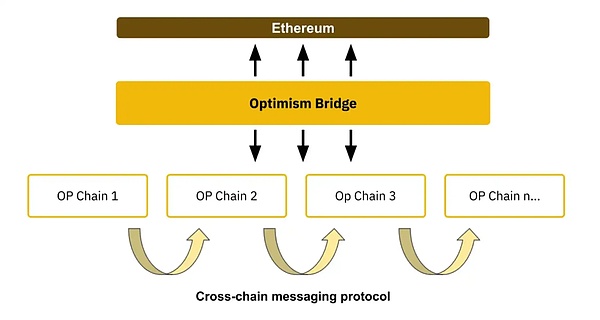
source: https://app.optimism.io/superchain
Sequencer Decentralization
Metis
The competition between Arbitrum and Optimism is more about competition in terms of protocols, network activity, ecological value, etc.However, another big problem that needs to be solved is the decentralization problem of L2 Sequencer, which has now become the elephant in the room.As the Dencun upgrade brings more L2 outbreaks, problems such as single point failure, malicious arbitrage, seizing MEV value, and censoring user trading space brought by centralized sorters may become increasingly serious.
Metis is the first to make changes in this regard and may become the first Ethereum L2 to run a decentralized PoS sorter.
Metis breaks the centralized pattern of sorters and supports nodes that pledge at least 20,000 METIS tokens to enter the sorter pool and become the sorter operator.The sorter entering the sorter pool will be responsible for determining the order of the transactions, and at least 2/3 of the sorter signature is required to upload the data to the L1 main network.In addition, to further prevent the sorter from doing evil, Metis also introduced the role of a validator to conduct sampling surveys on blocks to ensure that the sorter correctly sorts the transaction order.
Metis chose to make an active concession and actively gave the most profitable sorter revenue to the pledge node.With the emergence of more staking protocols for sorters in the future, we can also foresee that a wider range of users will also be able to participate in sorter staking and share the sorter income.Metis’ innovation in sorter decentralization and empowerment of METIS tokens have led to the rise in the price of METIS tokens, the staking rate of METIS tokens, and the inflow of funds from the Metis network.With the prosperity of the METIS network ecosystem and the growth of sorter revenue, more and more METIS will be pledged to the sorter nodes, and fewer METIS in circulation will be the same. The demand for METIS in the market will increase.The more, the more Metis and METIS tokens will be promoted to a positive cycle of rising TVL, ecosystem and coin prices.
The competition for decentralized sorters may become the core theme of the competition for L2 after Dencun upgrades.
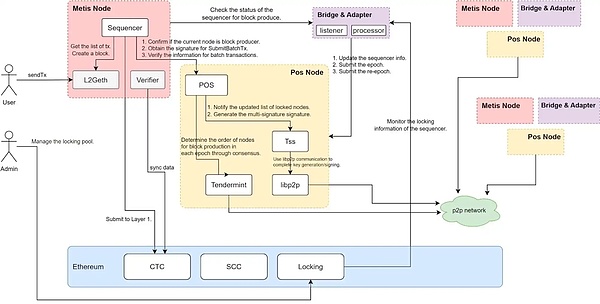
source: https://docs.metis.io/dev/decentralized-sequencer/overview
Token empowerment
Another key factor that determines the price of L2 tokens is the token empowerment of L2.At present, almost all Ethereum L2 uses ETH as Gas tokens, and its own L2 token has no other use except governance.Without a stable value consumption scenario, the tokens in the user’s hands will become abandoned pieces at any time.Tokens with actual empowerment, such as METIS, are more likely to move towards a positive spiral where the fundamentals of L2 and the price of coin rise.
In addition to the previously mentioned METIS tokens that can be used as decentralized sorter stake tokens and share sorter revenue, another case worth learning from is ZKF.ZkFair’s token ZKF can not only be used as a Gas token, but also pledges to share Gas revenue from the ZkFair network.Similar to METIS, the empowerment of tokens with pledged dividends is also easier to promote the spiral of ZKF market prices.In addition, Arbitrum Orbit has also added the function of supporting custom Gas tokens.
As mentioned earlier, all Rollups that share OP Stack share a common sorter network.Imagine that suppose Optimism also borrowed from Metis to introduce staking OP to become the module of OP Stack decentralized sorter, how much market demand and buying power will this bring to OP.The rise in currency prices will in turn attract more funds and users to applications within the ecosystem and feed back the prosperity of the ecosystem.Ethereum L2’s measures to empower tokens after the ups and downs are also one of the core issues that need to be focused on.
other
As mentioned earlier, the reduction in transaction fees and the increase in L2 TPS brought by the Dencun upgrade will benefit every Ethereum L2.In addition to the projects we discussed in the previous article, there are also some other projects that are worth looking forward to.
Base can be regarded as one of the best performing L2s in 2023. The strong binding relationship with Coinbase allows Base to undertake a large number of users and funds from Coinbase, becoming the third largest Ethereum L2 in TVL today.The rise of Base is inseparable from the hype of popular projects such as Friend.tech and FrenPet on Base.One of the major features of the above-mentioned projects is that the interaction frequency is high and the benefits of a single interaction are low.Moreover, the number of users undertaken is relatively large, and the application has higher performance requirements.The benefits brought by the Dencun upgrade coincide with the needs and characteristics of such projects.We may see more light applications in general social and gaming appear on Base, importing more users and funds for the Base ecosystem and stimulating Base’s ecological vitality.
In addition, there are more L2s such as Mantle and Blast that have not yet issued coins are still accumulating their energy.This type of L2 attracts users to participate in ecological interaction through gameplay such as coin issuance expectations and superimposed revenue marketing.Dencun upgrades can greatly reduce the cost of user interaction and further promote the prosperity of such L2 on-chain activities.But it is worth noting that we are not sure where this type of L2 will go after airdropping, and we can only be cautiously optimistic about this type of project at this stage.
Data availability layer
One of the core modules of Dencun upgrades is the introduction of blob storage data submitted by L2 to L1.But the data storage of the blob is not permanent, and after about a month or so, the stored data will be discarded.However, this part of the data still has the potential value of being called and analyzed.Therefore, the storage of this part of the data will also drive the demand for decentralized storage services.
ETHStorage
EthStorage is the first layer 2 solution to provide programmable dynamic storage based on the availability of Ethereum data, which can scale programmable storage to hundreds of terabytes or even at 1/1000 times the cost.PB level.
ETHStorage is highly integrated with ETH. The client of EthStorage is a superset of the Ethereum client Geth. This means that when the node running EthStorage can still participate in any process of Ethereum. A node can be the validator node of Ethereum.It is also the data node of EthStorage.
In addition, ETHStorage has stronger interoperability with EVM, which can achieve perfect compatibility with EVM.Taking Mint NFT images as an example, it takes three smart contract operations to complete the image stored on Arweave. ETHStorage only needs to be completed once.
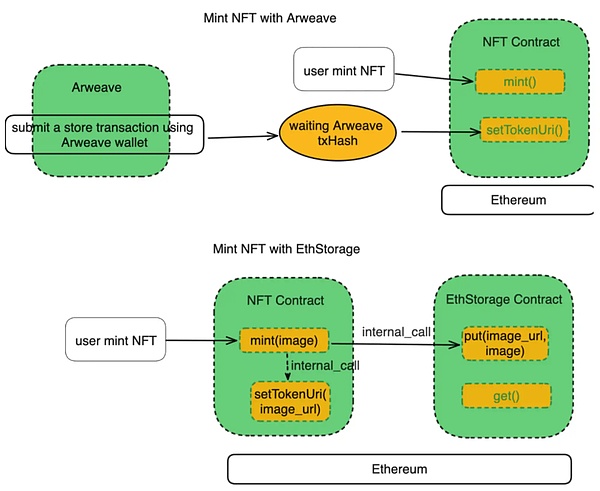
source: https://www.techflowpost.com/article/detail_12801.html
ETHStorage adopts the key-value storage paradigm and supports complete CRUD operations (create, read, update, delete stored data).Positioned from ETHStorage as the first storage L2 of the Ethereum ecosystem.Thanks to its seamless interoperability with EVM and low storage costs, ETHStorage is expected to undertake L2 status data discarded by the blob.
Covalent
Another decentralized storage project worth paying attention to is Covalent.Covalent was the first to smell the business opportunities in data availability after the Cancun upgrade and launched the “Ethereum Wayback Machine (EWM)” in November 2023 to store L2 status data discarded by the blob for a long time.
Of course, just storing data is of limited value for Covalent, so Covalent is not only a simple storage, but also integrates L2 data into its existing decentralized data analytics infrastructure services.Covalent supports users to seamlessly access blockchain data, providing data service support for specific user groups such as arbitrage providers, MEV researchers, AI researchers, blockchain data websites, etc.
No matter how the execution layer, settlement layer, consensus layer and short-term data availability layer are interpreted in the future of modular blockchain, Covalent hopes to become the long-term data availability layer for all project parties, providing permanent data storage and availability services.
With the implementation of Cancun’s upgrade, it is expected that data storage and availability tracks will usher in a new round of hype.Covalent, which has endorsed well-known exchanges such as Binance, Coinbase, 1kx, Delphi Digital, and front-line investment institutions, and has solid businesses, will not be at a disadvantage in the competition.
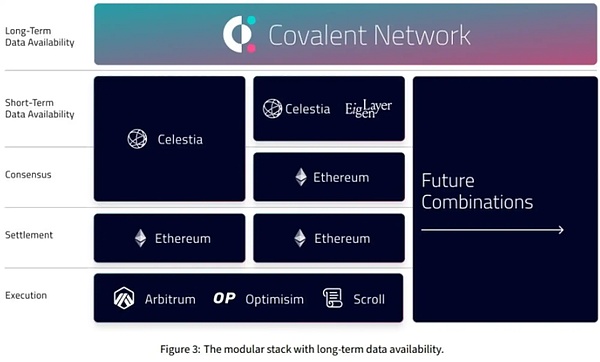
source: https://www.covalentthq.com/docs/covalent-network/ewm-paper/
Old-established decentralized storage projects such as Filecoin, Arweave, and Storj
The Cancun upgrade will also bring more practical decentralized storage business needs to old decentralized storage projects such as Filecoin, Arweave, and Storj.It is expected that the above-mentioned projects will also undertake some of the L2 status data discarded by the blob.Since this part of the data is only valuable to some special populations oriented towards data analysis and research, it does not require frequent status changes.Therefore, in comparison, Arweave, which focuses on one-time payment and permanent storage, may be able to win more growth in L2 state data storage business.
If we look at it for the long term, L2 also needs to have a dedicated data availability layer.In the long run, what is stored in the blob may not be the data and state submitted by L2, but the Merkel root calculated by this part.Let Ethereum no longer bear any additional data storage and return to the most fundamental consensus.
EigenDA
EigenDA is a big DA solution worth expecting.EigenDA implements the decoupling of data availability and consensus.First, Rollup needs to encode Data blobs using erasure coding and KZG commitments and issue KZG commitments.Subsequently, the EigenDA node composed of restaken requires proofreading verification and final consensus confirmation of the KZG commitment.Finally, the data confirmed by consensus will be submitted to the Ethereum main network.The core of EigenDA is to reuse Ethereum consensus, abstract the verification and final consensus confirmation links in DA, and complete this part of the link through reusing consensus.
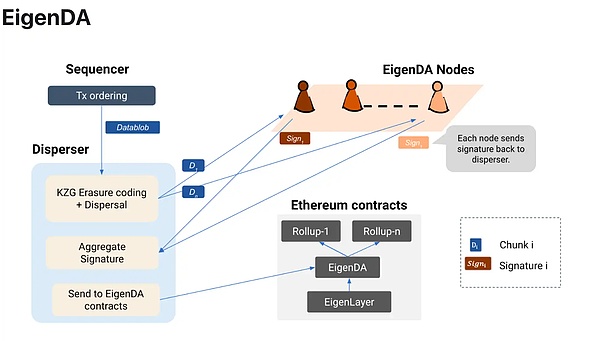
source: https://docs.eigenlayer.xyz/eigenda-guides/eigenda-overview
Polygon Avail
Polygon Avail is a project proposed by Polygon that focuses on solving data availability in the Ethereum expansion route.Avail aims to provide data availability services for different expansion solutions such as L2 and side chains.Avail supports EVM-compatible Rollup to publish data to Avail.Avail can efficiently sort and record transactions, and provide data storage and validation.In terms of validity proof, Avail adopts KZG polynomial commitment, which can provide a cleaner proof than Celestia and reduces node memory, bandwidth and storage requirements.Avail has been consistent with the Ethereum upgrade and expansion route since its inception, supporting developers to store data in Avail and choose to settle on the Ethereum main network.Amid the trend of modular blockchain, Avail is expected to become more of the underlying data availability service provider for EVM Rollup.

source: https://blog.availproject.org/the-avail-vision-reshaping-the-blockchain-landscape/
RaaS
RaaS providers can abstract the complex technologies of building blockchains, helping users quickly deploy L2 with one click through simple and easy-to-use tools or even code-free forms.As mentioned earlier, the Cancun upgrade will bring about an outbreak of L2.Improved L2 ease of use and performance will also promote the emergence of more L2s, which will benefit the underlying Rollup as a Service infrastructure.
Among the current RaaS solutions, there are also discussions about whether to choose OP or ZK solutions.OP-based solutions have better compatibility, richer ecology and lower thresholds.ZK-based solutions offer higher customization and greater security.Although in the long run, ZK-based solutions can be customized more, have stronger misaligned competitiveness, and can bring unique empowerment of functions and performance to the project.But in the short term, OP-based solutions can amplify the cost and performance advantages brought by Dencun upgrades to L2 with their low threshold and high compatibility, and reuse existing complete EVM infrastructure more quickly to achieve early stagesThe rapid expansion of users and funds has a more obvious short-term leverage effect.
Caldera
Caldera is a RaaS service provider built on OP Stack, which supports the rapid construction of Optimism L2 for users in a code-free way.L2 issued by Caldera can achieve full EVM compatibility, greatly reduce the development threshold for developers, and help directly reuse existing EVM ecosystem projects, thereby providing L2 with a more complete infrastructure.In addition to L2 itself, Caldera also configures users with a series of blockchain infrastructure, such as blockchain browsers, testnet faucets, etc., thereby further reducing the cost of chain issuance and usage thresholds, and plug-and-play.
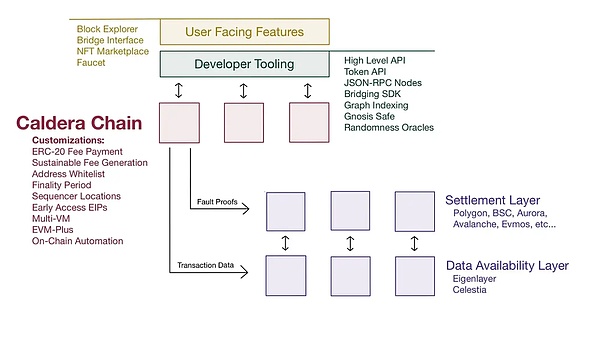
source: https://foresightventures.medium.com/foresight-ventures-what-is-raas-which-type-of-raas-will-win-the-market-b010006f5cd
Altlayer
Altlayer is another RaaS solution worth paying attention to under the Optimism system.Altlayer supports no-code deployment of L2.Developers can quickly create a Rollup chain by simply performing simple graphical interface operations.In addition, AltLayer also supports elastic Rollup—Flash Layer.When demand for mainnet applications surges, such as popular NFT projects start casting and popular DeFi projects issue airdrops, developers can quickly deploy a Rollup chain through Altlayer to respond to short-term surge in performance requirements.When the event ends and the status and assets are transferred back to the underlying chain, the Flash Layer can be deleted directly.Altlayer provides a transient scaling solution that avoids waste of resources, meeting more complex business needs.
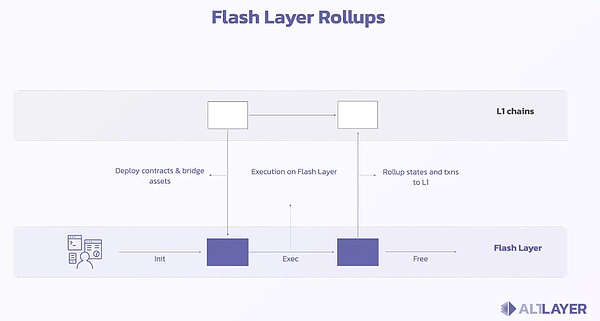
source: https://docs.altlayer.io/altlayer-documentation/rollup-types/flash-layer-rollups
Lumoz
Lumoz (formerly Opside) is a RaaS solution based on ZK, which supports developers to deploy their own ZK-Rollup in one click to generate customized zkEVM application chains.At the same time, the emergence of a large number of ZK-Rollups will also create a huge computing power demand for ZKP computing.Lumoz also built a decentralized ZKP market to support ZK mining and generate zero-knowledge proofs for ZK-Rollup.In terms of practical use, developers do not need to know anything related to ZK, and can quickly deploy a ZK-Rollup through simple front-end operations.The computing power requirements involved in the operation of ZK-Rollup can also be solved through the ZK-PoW service provided by Lumoz, which can greatly reduce the operation threshold and operating costs of the project party.In particular, Lumoz also supports 0 Gas Fee contracts, which can bring users a silky Dapp experience without interaction costs.The recent ZKFair is one of the L2s built on Lumoz.
Application layer
Previously, we discussed in detail the benefits of Dencun upgrades for Infra track levels such as L2, DA and RaaS.Dencun upgrades will also promote the development and innovation of the application layer for L2 costs and performance improvements.Next we will briefly analyze the application layer track that can significantly benefit from Dencun upgrades.
Perps
Overall, interactions in the DeFi track have the characteristics of low interaction frequency but high single-point interaction returns.Therefore, in a sense, DeFi does not rely particularly on high performance, and the benefits brought by a single DeFi operation can also cover the cost of interaction well.However, decentralized derivatives are relatively exceptional. The limitations of performance bottlenecks and the defects of excessive online transaction fees will be infinitely amplified during the operation of the decentralized derivatives protocol.
Due to the performance limitations of the L2 network, Perps-like projects are almost unable to run on-chain order thin and cannot efficiently respond to real-time order matching needs.Moreover, excessive network fees will greatly limit high-frequency trading of market makers and high-frequency trading users.The existence of the above problems has led to the low trading efficiency of Perps and relatively higher trading slippage, which cannot attract deep liquidity and professional trading users, and cannot bring users a trading experience comparable to CEX.
We believe that the Dencun upgrade can solve the above problems to a certain extent, especially the performance improvement is particularly critical for derivative trading.Compared with Perps in Point-to-Pool and AMM mode,Dencun upgrade is even more beneficial. L2 Perps such as ApeX Protocol, Aevo, Vertex ProtocolDecentralized derivatives exchange such as order thin models.Similarly, the reduction in online transaction fees will further stimulate more mature point-to-pool mode Perps transactions such as GMX, Synthetix, and GNS.
LSD
In addition to EIP-4844, the Dencun upgrade also includes the introduction of EIP-4788.EIP-4788 will introduce the beacon block root into each EVM block.This allows the Ethereum mainnet to obtain data from the Ethereum consensus layer in a way that minimizes trust, eliminates dependence on external oracles, thereby reducing potential security risks, oracle failures and malicious manipulation risks.The introduction of EIP-4788 can further improve the security of the staking protocol, and although this improvement is not direct for users, it is a potentially significant benefit for LSD and the ReStaking track.EIP-4788 enables liquid staking protocols such as Lido, Rocketpool, Swell, and restaking protocols such as Eigenlayer to access key data such as validator balance and status directly from the consensus layer, thereby significantly improving its security and operational efficiency.We still have high expectations for the development of the LSD after the Dencun upgrade, especially the development of the ReStaking track represented by Eigenlayer.Eigenlayer has also made frequent moves recently, supporting a variety of LSTs, and has cooperated with Altlayer to launch Restaked Rollups and the ecological re-staking protocol Renzo. It has been launched, and EigenDA has also opened the second phase of the test network.Eigenlayer’s TVL has also reached 1.7B and continues to climb.The narrative of re-pled has just emerged, and EIP-4788 will provide a solid bottom-level security guarantee for re-pled.
FOCG
Full-chain gaming is one of the biggest beneficiaries of Dencun’s upgrade.Unlike the Web2.5 game whose game main body is still off-chain, the game content, logic, rules, and assets of the full-chain game are all on the chain.The cost of Gas on the chain determines the cost of interaction for each game operation, and the performance on the chain determines the user experience of the player.It is obvious that due to performance limitations, previous full-chain games were limited to simpler turn-based strategy games.The high interaction cost and the game’s demand for high-frequency interaction also discourage many players.
The Dencun upgrade can intuitively improve the development dilemma of existing full-chain games, and even give birth to more full-chain game types.We are optimistic that more full-chain games are built on full-chain game engines such as Mud and Dojo, and run on L2 Redstone and StarkNet.Existing full-chain games such as Sky Strife, Loot Survivor, Issac, and Influence may also capture more real players due to the improvement in user experience brought by the Dencun upgrade.
The implementation of Dencun’s upgrade will inject new vitality into the Ethereum ecosystem.Of course, in addition to benefiting the tracks mentioned above, Dencun upgrade will also reduce the attractiveness and core competitiveness of some tracks such as side chains and non-EVM expansion solutions.The significant reduction in cost and performance of the EVM ecosystem, L2 and L3, will further eclipse sidechain solutions such as Polygon, and non-EVM expansion solutions such as BSC will also reduce the attractiveness brought by cost and performance advantages.The Dencun upgrade will refocus the market focus on the Ethereum ecosystem with L2 and L3 as the core.
Summarize:
1. Dencun upgrade is part of the “The Surge” in the Ethereum upgrade roadmap, aiming to further reduce the use cost of the Ethereum ecosystem and improve the scalability of the Ethereum ecosystem.The Dencun upgrade will introduce instantaneous storage opcodes through EIP-1153, reducing the storage cost and Gas consumption of the Ethereum main network and improving the scalability of the main network.The Dencun upgrade will also introduce EIP-4844, which significantly reduces the transaction costs of Ethereum L2 and increases the transaction throughput of L2 by introducing a new data structure blob.
2. Judging from the current Shadowfork test report and the 178th Ethereum core developer execution meeting held recently, the current test of Ethereum Dencun upgrade is in good condition, and the three major test networks will be conducted separately from January to early February as expected.Testnet Dencun upgrade test.If the test network test goes well, the main network’s Dencun upgrade is expected to be completed within 2 months.
3. The Dencun upgrade will further drive the prosperity of the L2 ecosystem, and Optimism, Arbitrum and Metis are particularly worthy of attention.The Dencun upgrade will also drive the demand for Infra tracks such as decentralized storage, DA and RaaS.The development of ecological projects such as EthStorage, Covalent, EigenDA, Polygon Avail, Caldera, Altlayer, Lumoz is worth paying attention to.
4. Dencun upgrade will also promote the development and innovation of the application layer, and the order-thin model Perps represented by ApeX Protocol, Aevo**, and **Vertex Protocol will benefit significantly.EIP-4788 will improve the underlying security of LSD and ReStaking protocols, and will especially drive the development of the re-staking track represented by EigenLayer.Full-chain games will also bring users a better interactive experience due to the Dencun upgrade.
Finally: MT Capital is very optimistic about the EVM ecological innovation brought by the Dencun upgrade. Welcome early projects and entrepreneurs in the tracks such as ReStaking, DA, L2, Perps, FOCG, etc. to contact us at any time.(Twitter: @0X_IanWu, @Severin0624, MT Capital Email: deck@mt.capital)
Reference:
-
https://vitalik.eth.limo/general/2023/12/28/cypherpunk.html
-
https://www.datawallet.com/crypto/ethereum-cancun-upgrade-explained#:~:text=Ethereum Cancun EIPs,-The imminent Ethereum&text=The Cancun component of the,costs%2C efficiently using block space.
-
https://ethereum-magicians.org/t/a-rollup-centric-ethereum-roadmap/4698
-
https://www.eip4844.com/#how
-
https://a16zcrypto.com/posts/article/an-overview-of-danksharding-and-a-proposal-for-improvement-of-das/
-
https://hacken.io/discover/eip-4844-explained/
-
Ethereum Evolved: Dencun Upgrade Part 3, EIP-4788
-
EIP-4844 Unveiled: Paving the Way for Proto-Danksharding in Ethereum
-
EIP-4844: Shard Blob Transactions
-
An explanation of the sharding + DAS proposal
-
Ethereum’s Cancun-Deneb (Dencun) Upgrade: another milestone after the Shanghai Upgrade
-
Recapping the Rollups Roadmap
-
Ethereum: Dencun Upgrade and Proto-Danksharding
-
Unlocking Ethereum’s Evolution: The Cancun Advancement
-
https://hackmd.io/@vbuterin/sharding_proposal#ELI5-data-availability-sampling
-
dencun-gsf-1 analysis
-
https://foresightnews.pro/article/detail/28606
-
https://foresightnews.pro/article/detail/40103
-
https://foresightnews.pro/article/detail/51220
-
https://bitpush.news/articles/5743354
-
https://www.techflowpost.com/article/detail_15286.html
-
https://foresightnews.pro/article/detail/43926
-
https://foresightnews.pro/article/detail/35645
-
https://www.techflowpost.com/article/detail_15313.html
-
https://foresightnews.pro/article/detail/20033
-
https://www.techflowpost.com/article/detail_12801.html
-
https://foresightnews.pro/article/detail/51217
-
https://docs.eigenlayer.xyz/eigenda-guides/eigenda-overview
-
https://docs.altlayer.io/altlayer-documentation/rollup-types/flash-layer-rollups
-
https://foresightnews.pro/article/detail/27148

